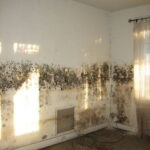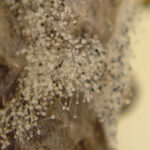How to Control Moisture in Your Home
Controlling moisture in your home is an essential part to a healthy environment, not only for you, but also, for your possessions. Too much moisture can lead to the growth of mildew and mold. Additionally, too much moisture can lead to unpleasant and musty odors. Fortunately, simple strategies exist for the prevention of too much moisture in the home.
Removing Dampness in the Kitchen, Bathroom, and Laundry Room
Install exhaust fans in each of these rooms if you do not have them already to control moisture in your home. Use them on a regular basis. However, limit the time you use them whenever you also have the heat or air conditioning on inside your home.
Never vent the dryer into your home. Also, never allow any exhaust fan vents to enter the attic rather than the outside area of the home. Allow the shower curtain or glass doors to remain spread out so that they can dry more quickly.
If your bathroom has a closet inside, then check to make sure that water is not getting inside it from hot, steamy showers. If it is, then you may need to either replace the door or play moisture police after each shower to control moisture in your home.
Use lids on your pots and pans whenever possible to prevent steam from building up in the air. If too much steam still escapes into your home, run the exhaust fan to control moisture in your home.
Removing Dampness in the Basement
The moisture build up in basements can typically be controlled with the addition of a dehumidifier, extra insulation, or a higher temperature setting. Heat dries moisture, so using more heat in the basement can only help to dry the air and control moisture in your home.
Avoid using kerosene heaters since they can add moisture to the already moisture laden air. If you use a space heater to add extra heat to the area, make sure that you follow safety precautions as well.
Check your basements walls and floors for signs of leakage. Repair any cracks, holes, or crevices that you discover to control moisture in your home. Consider commercial waterproofing materials for any walls or floors that are accessible.
Check to see that the downspouts outside your home are directing water runoff a sufficient distance from your home, preferably several feet. If the water runoff sits too closely to the home, consider extending your downspouts.
Check to see that any existing sump pumps are working properly. Also, maintain a regular check that the sump pump area remains clean.
Removing Dampness in the Crawl Space
Not everyone has a crawl space in his or her home, but if you do, utilize the following strategies to prevent dampness from entering through a crawl space. The first thing you need to do is to make sure that the ground directly outside of the home’s crawl space gently slopes down and away. If it doesn’t, fix it so that it does so you can control moisture in your home.
Check your crawl space for signs of water. If any exist, then you need to remove it before you continue with the next step. Once the ground is dry, add a layer of polyethylene plastic over the soil.
Next, check to see if your crawl space has foundation vents for ventilation. It should have at least one at every corner. If not, then you need to have them installed. If you have the corner vents, but dampness in the crawlspace is an issue, check to see if shrubs or other obstacles block the vents. If they are blocking them, clear the obstacles away. If not, then you may need to consider adding additional vents to control moisture in your home.






